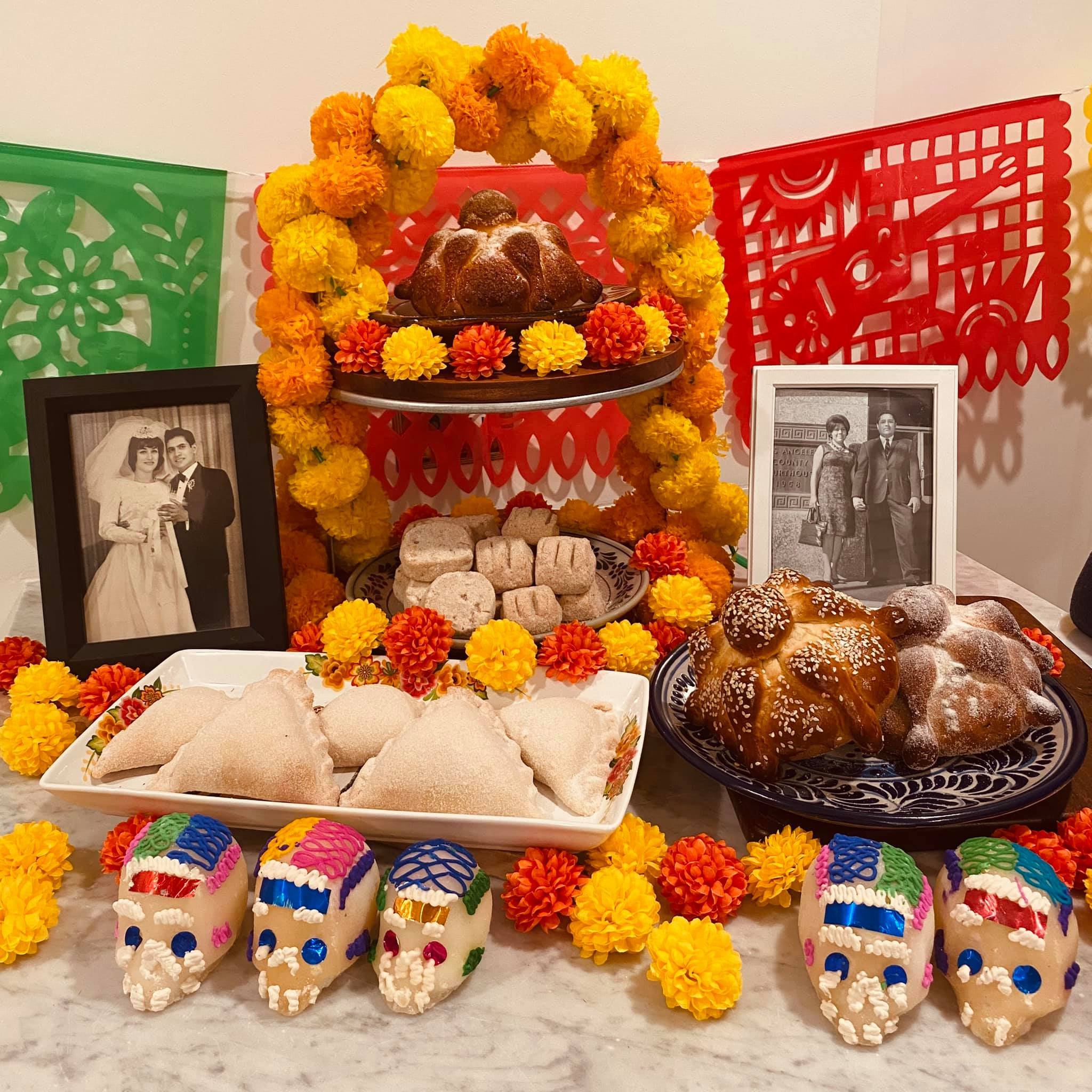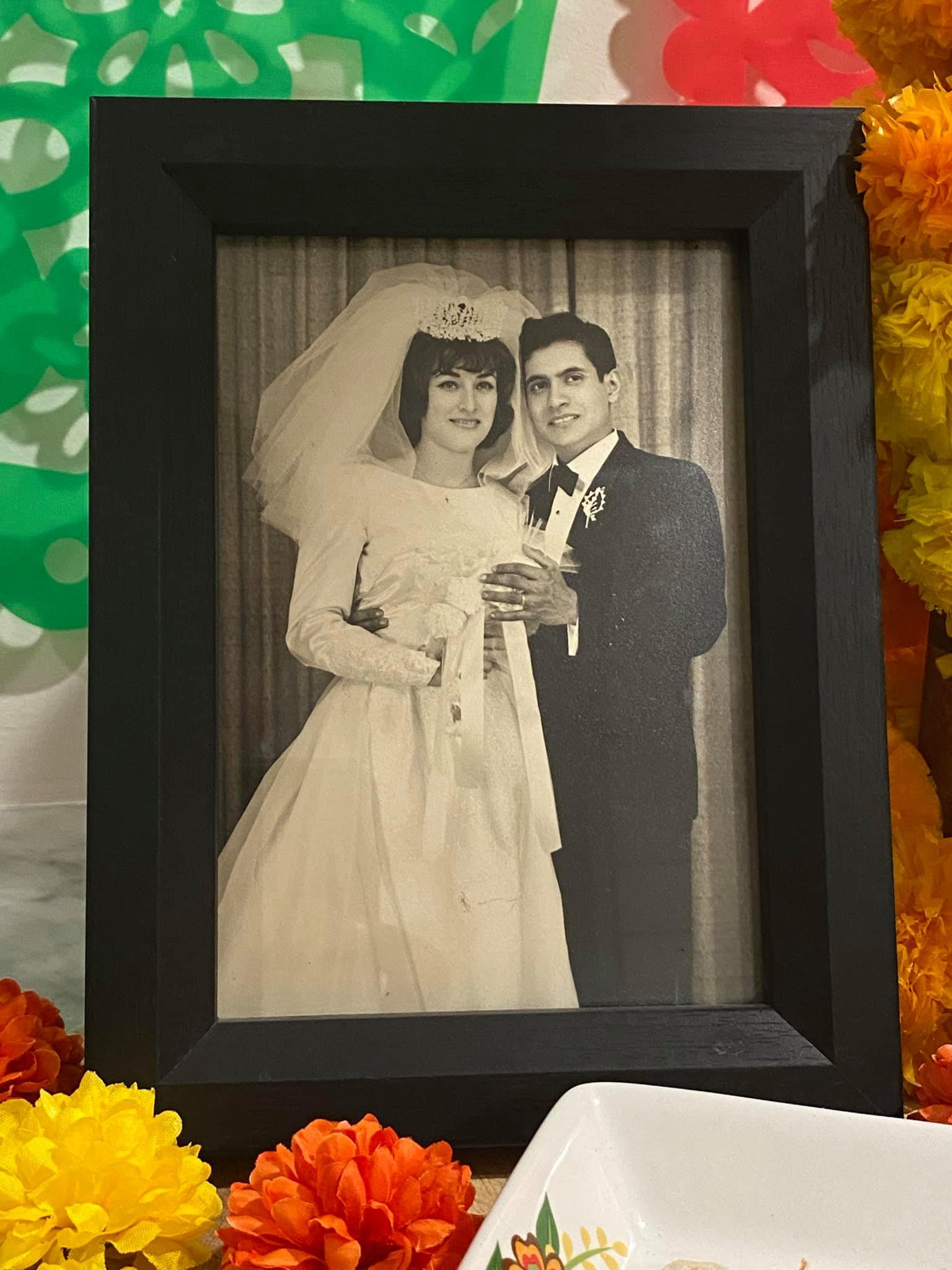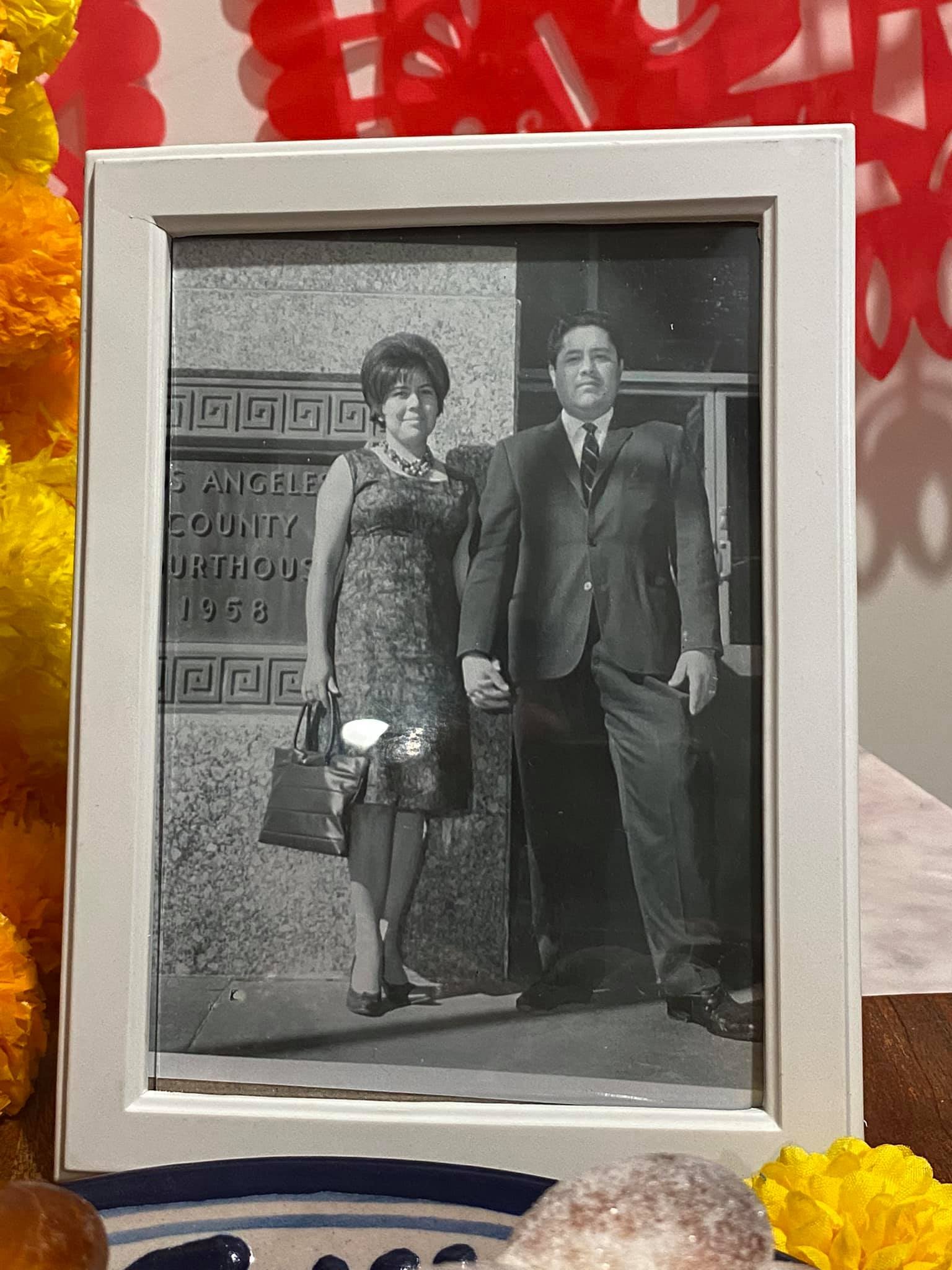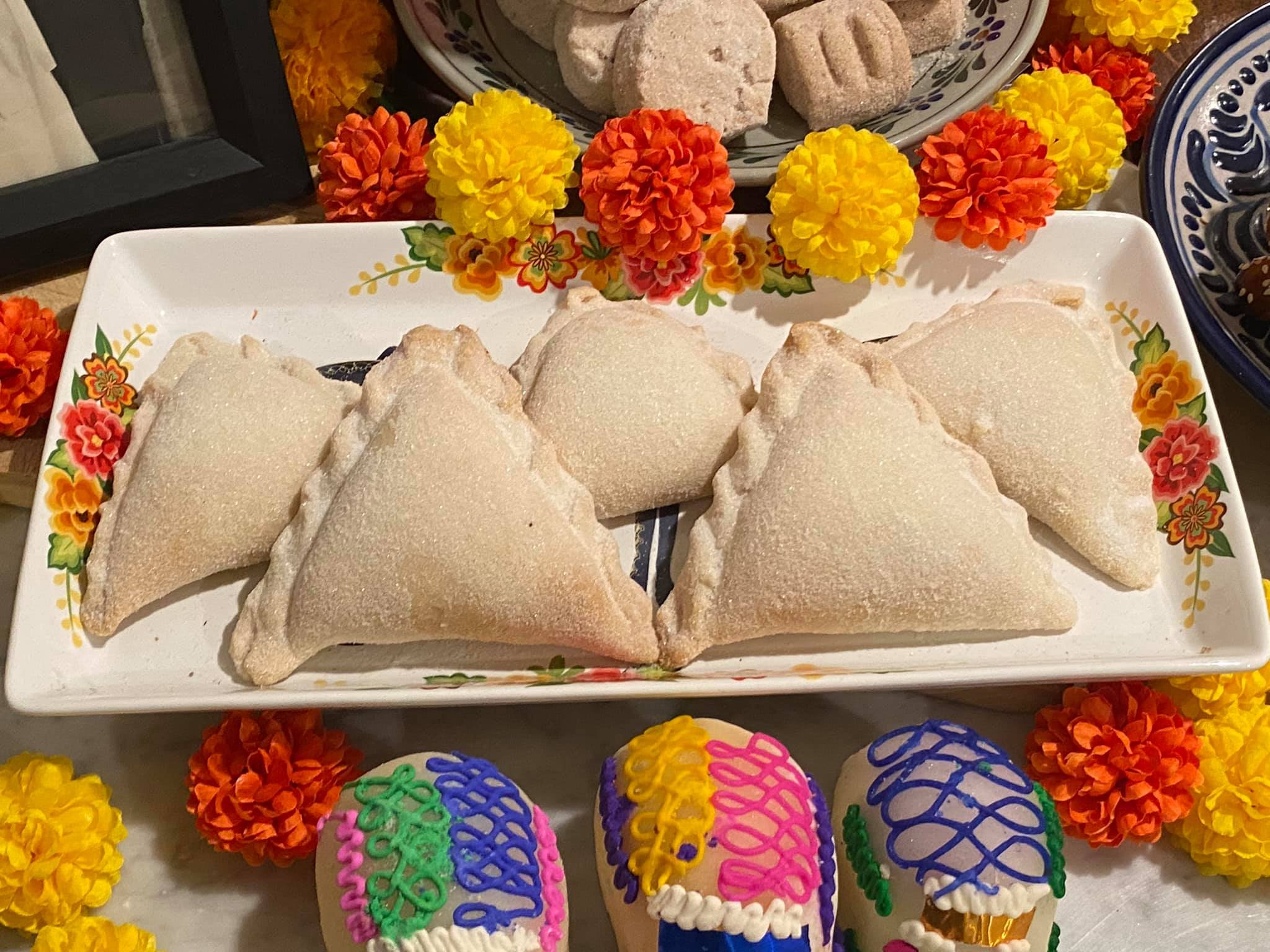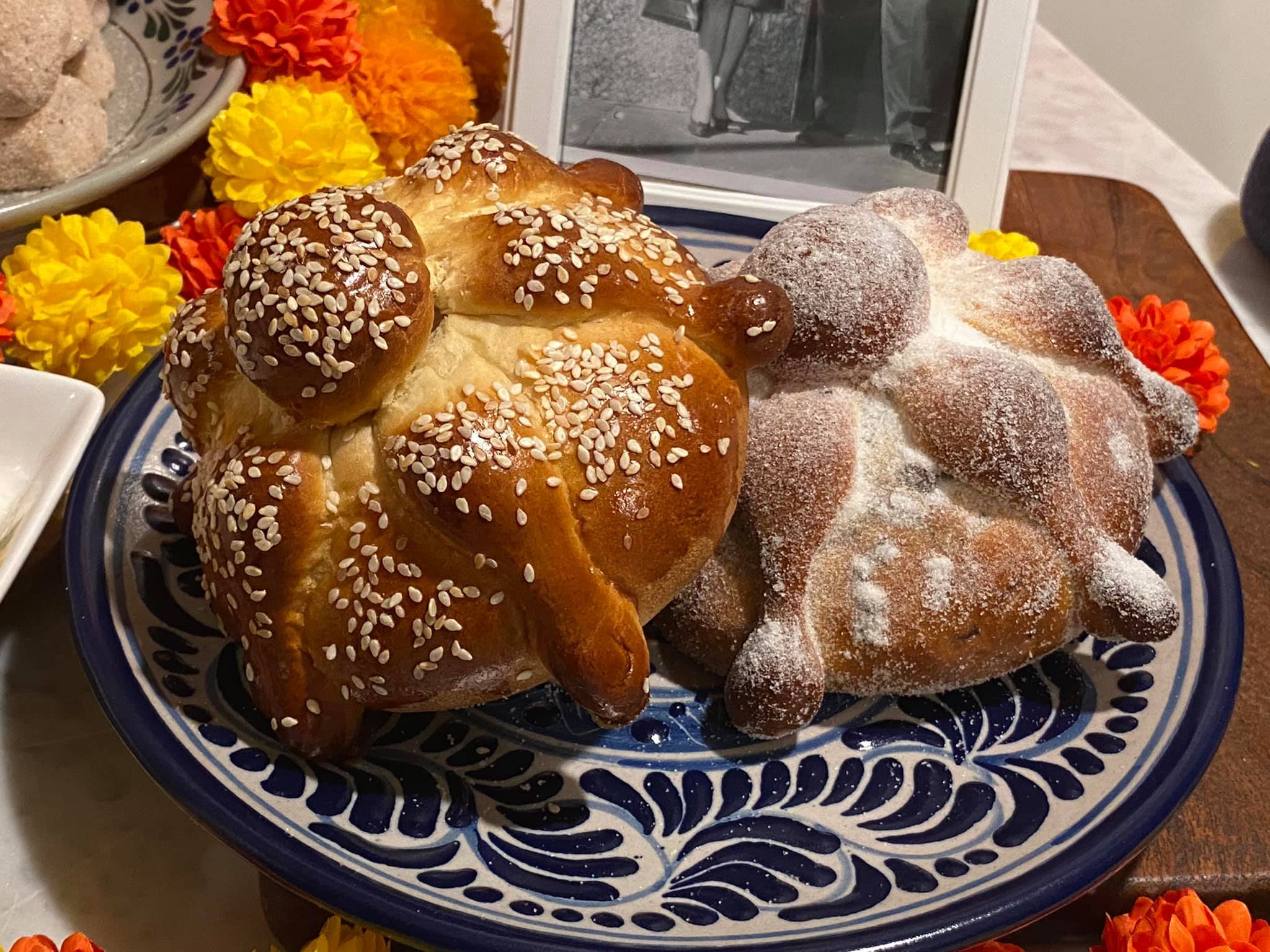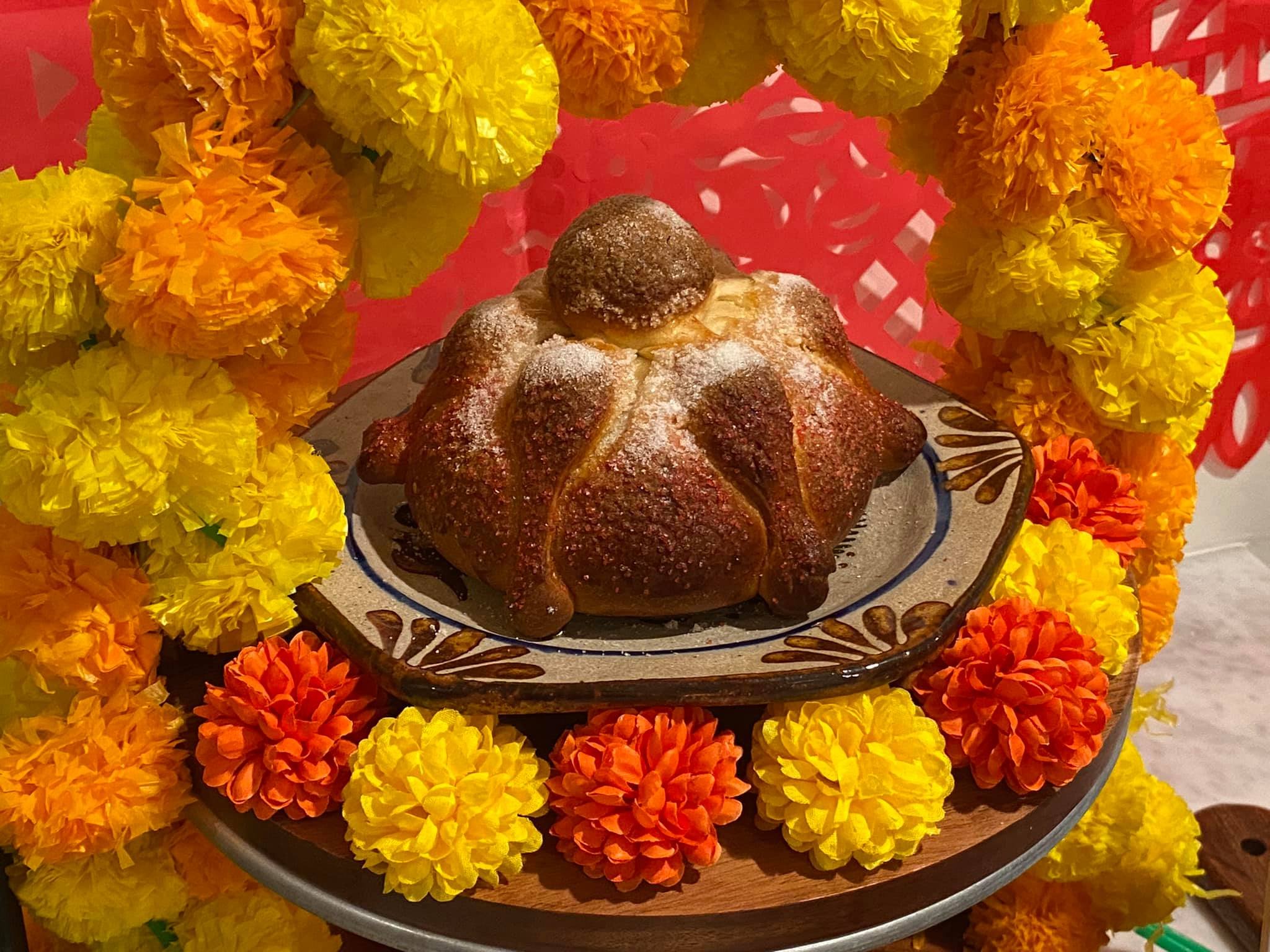Tumbas - Pan de Muerto
P
an de Muerto
Tumbas
Fermented Dough
Demo and Recipe Below!
El Dia de Los Muertos (Day of the Dead), dates to ancient indigenous traditions, as far back as the 900 A.D. when the Toltec people ruled Central Mexico. The Aztecs continued similar rituals to that of their predecessors and were credited for creating and placing altars with food amongst tombs. The altars were a way to remember the warriors that gave all, and the food to accompany them to the afterlife. The celebration consisted of remembering the goddess of death and presider of the underworld, Mictēcacihuātl.
It was not until the influence from the Spaniards, that the dates and traditions adjusted to what we celebrate today. This holiday is a blend of Indigenous ritual and Spanish culture all celebrated on November 1st through November 2nd. The first day of November, it is known as El Dia de Los Inocentes (Day of the Children). In some regions of Mexico, the Pan de Muerto is decorated with white sugar to represent the deceased children on this day. The same sweetbreads are decorated with red or pink sugar to represent the adult deceased on November 2nd, El Día de Los Muertos (Day of the Dead). These celebrations are a way to maintain a connection with loved ones, even after they have left this world. Altars are crafted, in many different fashions, to provide symbols and remembrance of the loved ones. Colorful Marigold flowers, along with their pungent scent, serve as a runway and to guide our loved ones through the transition as they visit the altars. These beautiful flowers also represent the fragility of life.
A couple of weeks ago, on a road trip to Carpentaria, California, I asked Karina to bring a picture of her parents and I did the same. Although I never had the opportunity to meet her parents, the ability to bake some Pan de Muerto and place it on the altar dedicated to both our parents, may they rest in peace, was fascinating. My beautiful mother, Rosalia Romero Peña, was from Chihuahua, Mexico, and in my opinion the most precious of the northern states. My father, Pepe Peña, was born and raised in Los Angeles, California and raised by my grandmother, Juanita Ortiz Peña from Guanajuato, Mexico, similar to Karina’s parents, Hugo Rico Sr. and Marylou Tinoco Rico. A connection that at one point had me jokingly calling Karina, my prima (cousin). Although our altar only captured a surfacing connection between our parents; it is the reality of this life that brings us all together.
Feliz Día de Los Muertos
Pan de Muerto
Tumbas Demo ✨
Pan Dulce - Fermented Dough Category - Revised: October 18, 2021
Dough Recipe Recipe
Yields 4, 250-gram Tumbas (tombs)
US Cups - Ingredients Baker’s
3 cups - All-Purpose Flour
1⁄3 cup - Water - ambient
3 eggs - Whole Eggs
1⁄2 cup - Granulated Sugar
1⁄2 cup - Unsalted Butter
2 Tbsp - Instant Dry Yeast
1 tsp - Salt
1 tsp - Orange Zest
1 tsp - Butter Flavor
Dough Mixing Procedure
Set aside the orange zest, flavor, salt, and unsalted butter.
Add flour and instant yeast to bowl and mix thoroughly, then add water, eggs, and sugar.
Using a dough hook attachment, mix for 4 minutes on low, until well- incorporated.
Add remaining ingredients and mix for 4 minutes on medium. Scrape down dough from sides of bowl.
Continue mixing for 8-10 minutes on medium speed, until the dough does not stick to bowl.
Remove the dough from the mixing bowl, carefully round, then place in a well-greased bowl.
Cover and let rest for 60-90 minutes, or until doubled in size. Best if refrigerated overnight (not to exceed 15 hours of refrigeration.)
Using the bench knife divide into six equal pieces or scale to desired pieces (175 grams each piece.)
Take four pieces and round into dough balls, place on greased pan and use shortening on palm of hand to coat dough balls. Give the dough balls an additional 45–60-minute rest.
While the rounds are resting, divide and shape the skull and bones.
Take the other two pieces of dough and divide into 16 pieces (20 grams each). Roll four pieces into small skulls (calaveras) and roll the remaining pieces between your fingers and countertop, to shape 12 bone strands (canillas).
Take the four rounded pieces of dough and flatten with the palm of your hand. Add more shortening to avoid from drying.
Crisscross the bone strands, three per tumba and let rest for an additional 30 minutes.
Round the small skulls and place over the center of the tumba.
Give another 1-hour final fermentation or until doubled in size
Place in a preheated oven 340°F, for 25 – 30 minutes.
Note: One traditional method to decorate is to brush with melted butter, while still hot, before tossing in granulated sugar. Another method is to egg wash and add sesame seeds, or sugar at this stage.
More posts and recipes!
Alex Peña
“Baking is the most rewarding part of my culinary experiences.”
Subscribe
Get baking updates!





